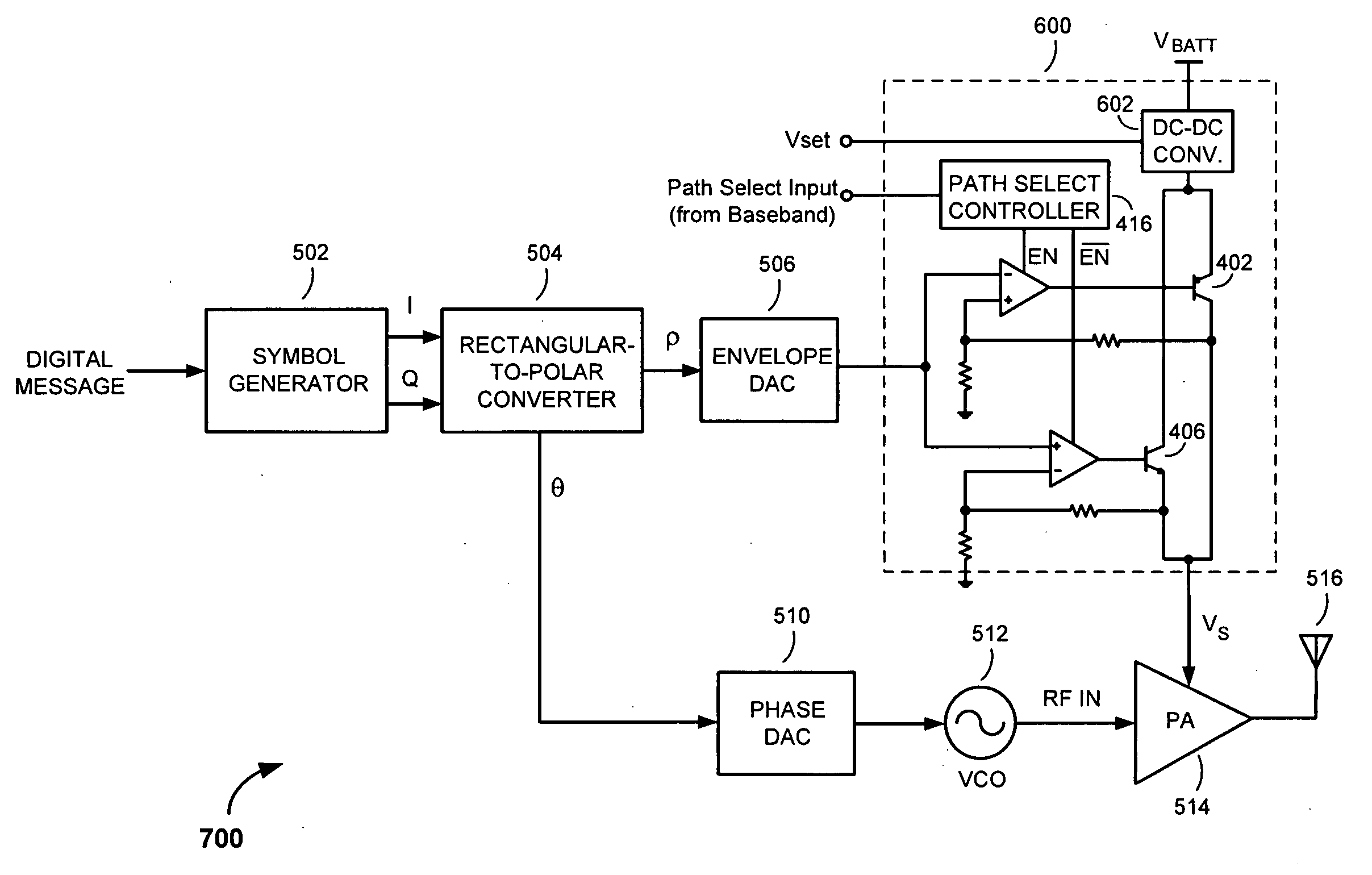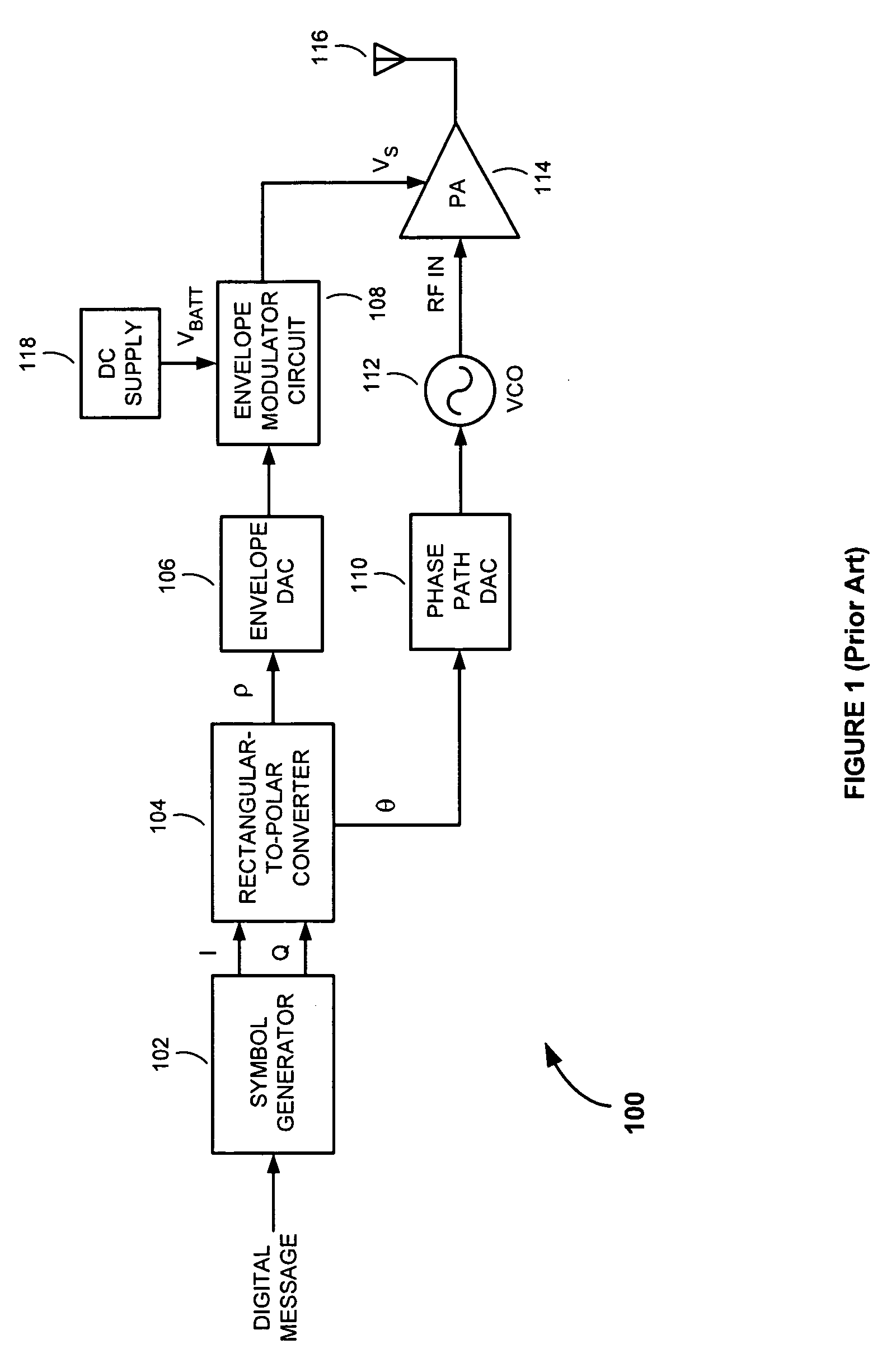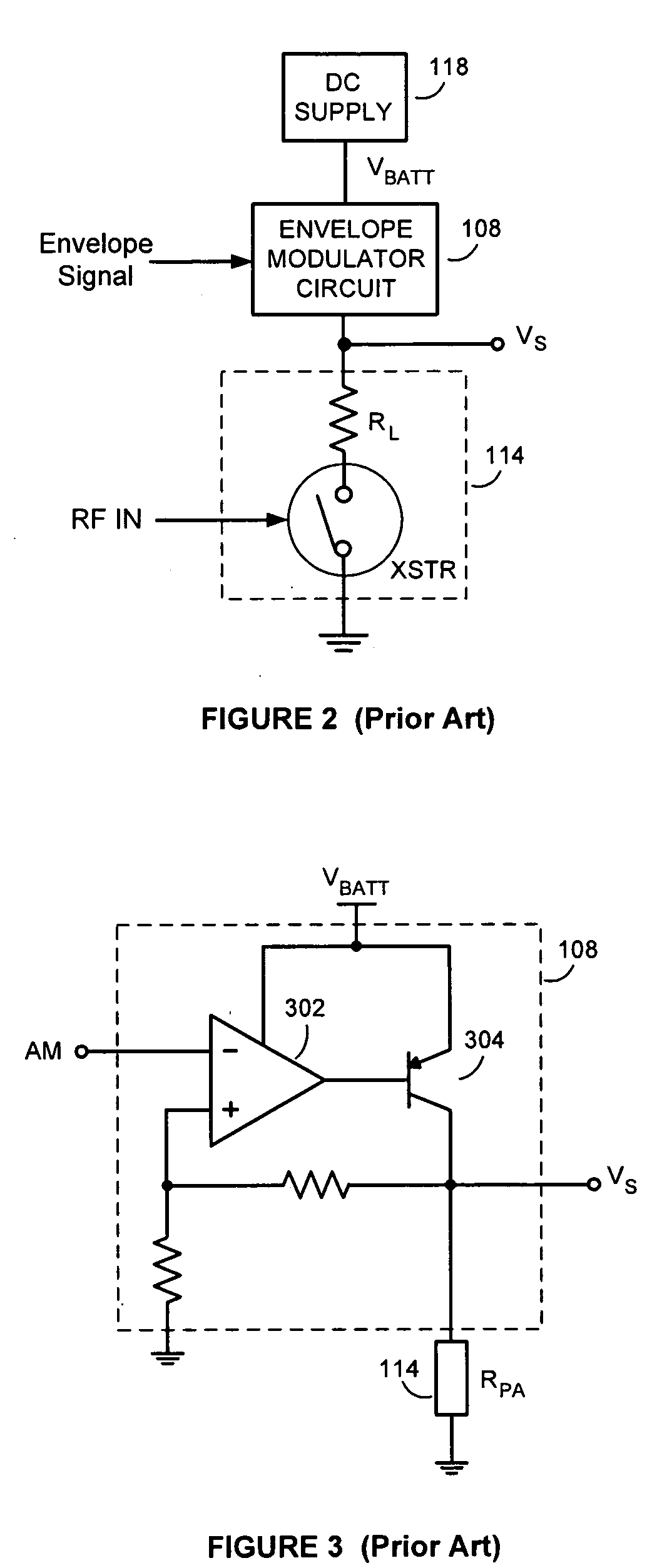Polar modulation transmitter with envelope modulator path switching
a polar modulation transmitter and path switching technology, applied in the field of wireless communication, can solve the problems of reducing efficiency, limiting the battery life of the device, and difficult to improve the power efficiency of conventional rf pas, so as to achieve the effect of reducing the voltage drop across the envelope modulator circuit, reducing the cost of operation, and improving stability and noise isolation
- Summary
- Abstract
- Description
- Claims
- Application Information
AI Technical Summary
Benefits of technology
Problems solved by technology
Method used
Image
Examples
Embodiment Construction
[0028]Those of ordinary skill in the art will realize that the following detailed description of the present invention is illustrative only and is not intended to be in any way limiting. Other embodiments of the present invention will readily suggest themselves to such skilled persons having the benefit of this disclosure. Reference will now be made in detail to implementations of the present invention as illustrated in the accompanying drawings. The same reference indicators will be used throughout the drawings and the following detailed description to refer to the same or like parts.
[0029]Referring first to FIG. 4, there is shown an envelope modulator circuit 400 for use in the amplitude path of a polar modulation transmitter, in accordance with an embodiment of the present invention. The envelope modulator circuit 400 comprises first and second parallel power supply paths selectively configured to supply power to the power supply port of an RF PA (represented as a load 401 having...
PUM
 Login to View More
Login to View More Abstract
Description
Claims
Application Information
 Login to View More
Login to View More - R&D
- Intellectual Property
- Life Sciences
- Materials
- Tech Scout
- Unparalleled Data Quality
- Higher Quality Content
- 60% Fewer Hallucinations
Browse by: Latest US Patents, China's latest patents, Technical Efficacy Thesaurus, Application Domain, Technology Topic, Popular Technical Reports.
© 2025 PatSnap. All rights reserved.Legal|Privacy policy|Modern Slavery Act Transparency Statement|Sitemap|About US| Contact US: help@patsnap.com



